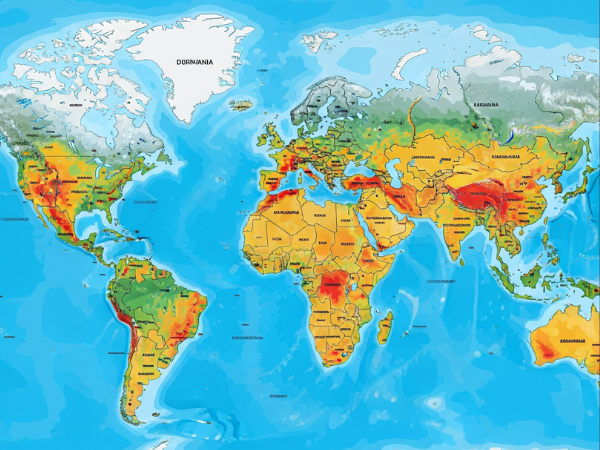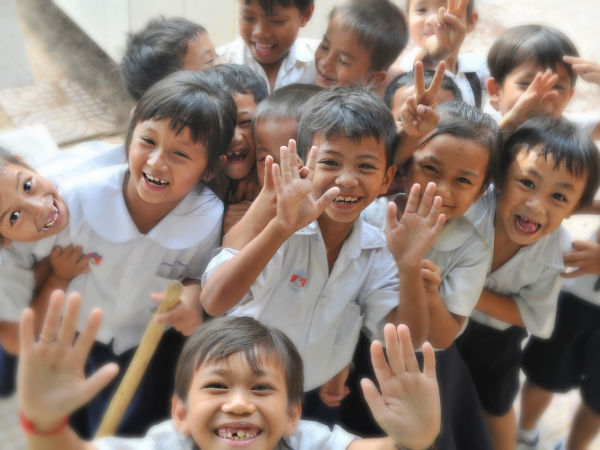Have you ever wondered how many children are in the world right now? Understanding the global population of children is more crucial than ever.
This data impacts everything from education and health care to economic growth and social policies. We’ll break down the latest statistics and trends that shape the future of our youth.
Defining “Child” For Global Statistics
Different organizations offer varied definitions based on age. This difference shapes how we interpret population statistics. Accurate data is essential for planning resources and services for young people.
Age Range And International Standards
Global organizations, such as UNICEF and the UN, define “child” as any person under 18 years. This definition helps standardize data collection across countries. However, different organizations may use varying age brackets for analysis. Here are some common age ranges:
- 0-4 years: Infants and toddlers
- 0-14 years: Early childhood to pre-adolescence
- 5-17 years: School-age children
This variation affects the interpretation of population data. For instance, a country with a large number of children aged 0-4 may have different needs than one with more adolescents.
The Significance Of Age Demographics
Age demographics play a significant role in shaping a country’s future. A “youth bulge” can offer opportunities for economic growth. Young people can contribute to the labor force.
- Investments in education are necessary to prepare youth for jobs.
- Healthcare services must adapt to the needs of growing populations.
On the other hand, declining child populations indicate aging societies. This trend raises concerns about future labor shortages. Countries with fewer children may struggle to maintain economic growth. Proper planning is essential to address these issues.
Global Child Population: The Latest Figures (2024-2025)
The global child population plays a significant role in shaping economies, health systems, and education. This guide explores the estimated number of children and their proportion in the total population for these years.

Current Estimates
The estimated number of children under 18 years old is substantial. In 2023, UNICEF reported that there are approximately 2.415 billion children globally. This number highlights the importance of focusing on child welfare and education.
By 2025, the total world population is projected to reach around 8.232 billion. Out of this, about 24% will fall into the 0-14 age demographic. This translates to roughly 1.97 billion children, according to UNFPA estimates.
| Year | Total World Population | Children (0-14) Population | Percentage of Total Population |
|---|---|---|---|
| 2023 | – | 2.415 billion | 25.05% |
| 2025 | 8.232 billion | 1.97 billion | 24% |
Looking ahead, the global child population is expected to largely stabilize around 2.3 billion by the 2050s. This stability will influence various sectors, especially education and healthcare.
Proportion Of The Total Population
Children aged 0-14 constitute a significant portion of the global population. In 2023, they made up around 25.05% of the total population. This figure reflects the high number of young people worldwide.
For 2025, the 0-14 age group is projected to maintain a similar proportion, accounting for about 24% of the total population. This means that approximately one-quarter to one-third of the world’s inhabitants are children.
- Children (0-14) are crucial for future development.
- Policies must address their needs effectively.
- Education and health care are vital for this demographic.
The large proportion of children emphasizes the necessity for focused investments. Governments and organizations must prioritize child welfare programs. Ensuring a better future for children leads to stronger societies.
Regional Distribution: Where Children Live
This section focuses on the regional distribution of children. It highlights where the majority of children reside and how their numbers vary by country.

Concentrated Populations
A majority of children live in Sub-Saharan Africa and Southern Asia. In these regions, the child population is notably high. For example:
- India alone had over 358 million children (ages 0-14) in 2023.
- Nigeria had over 92 million children (ages 0-14) in 2023.
These numbers show a significant concentration of young people in specific areas. The following table illustrates the top five countries with the highest number of children:
| Rank | Country | Number of Children (approx.) |
|---|---|---|
| 1 | India | 436.6 million |
| 2 | China | 285.8 million |
| 3 | Indonesia | 84.2 million |
| 4 | United States | 74.1 million |
| 5 | Ethiopia | 59.5 million |
| 6 | Nigeria | 55.6 million |
| 7 | Democratic Republic of Congo | 55.6 million |
| 8 | Brazil | 51.0 million |
| 9 | Pakistan | 45.5 million |
| 10 | Bangladesh | 44.0 million (est.) |
These regions face immense pressure on resources and services. Large populations of children impact education, healthcare, and housing. Countries like India and Nigeria must work hard to provide for their young citizens.
Varying Proportions By Country
Child populations vary greatly across different countries. Some nations have a high proportion of children, while others have low numbers. For instance, the highest proportion of children (ages 0-14) is found in:
- Central African Republic (49.17%)
- Niger (46.97%)
- Chad (46.74%)
- Somalia (46.68%)
- Mali (46.46%)
These statistics show that these countries have nearly half of their populations made up of children. In contrast, some countries have low proportions, under 15%, such as:
- Japan
- Italy
- Germany
This illustrates global disparities in age structures. Regions with high child populations often struggle with development challenges. Meanwhile, countries with fewer children may face different issues, such as an aging population.
Demographic Trends: Births, Deaths, And Growth
This section highlights birth rates, mortality rates, and the role of migration in shaping child demographics.

Birth Rates And Fertility
Birth rates indicate how many children are born in a given area. The Global Total Fertility Rate (TFR) for 2024 is estimated at 2.2 births per woman. This rate shows a significant decline from around 5 in the 1960s. It is nearing the replacement level of 2.1. This decline reflects changes in family planning, education, and economic factors.
High fertility rates still exist in specific regions. For example:
- Niger has a fertility rate of 44.5 births per 1,000 women.
- Chad’s rate is about 5.94 births per woman in 2025.
Such high rates in Sub-Saharan Africa contrast with lower rates in other parts of the world. This difference affects the growth of the child population globally.
Infant And Child Mortality Rates
Mortality rates among infants and children under five are critical indicators of health. In 2022, global under-5 mortality reached a historic low of 4.9 million deaths (UN IGME). However, in 2023, 4.8 million children died before age five, with almost half being newborns.
The majority of these deaths occur in regions like:
- Sub-Saharan Africa
- Southern Asia
Most of these deaths are largely preventable. Addressing healthcare access, nutrition, and education can drastically reduce these numbers. Global efforts focus on improving child health to save lives.
Migration’s Role
Migration significantly impacts child demographics worldwide. In 2020, there were about 36 million international migrant children. This figure represents a 50% increase from 1990-2000. Roughly half of these migrant children, around 14 million, live in Asia.
Migration patterns also show:
- 31% (about 11 million) reside in Europe and North America.
- Internal migration, particularly from rural to urban areas, also changes child demographics.
These trends highlight the complex interactions between migration and population growth, affecting education, health, and economic opportunities for children globally.
Implications Of Global Child Population Trends
Understanding these implications helps us prepare for the future. The trends in child population directly affect national budgets, workforce dynamics, and the realization of Sustainable Development Goals (SDGs).
Resource Demands And Development
A high child population places a heavy demand on resources. Governments and communities must respond to these needs effectively. The following areas are most affected:
- Education: Schools must accommodate more students, requiring more teachers and facilities.
- Healthcare: Increased child populations need better healthcare services, from vaccinations to routine check-ups.
- Nutrition: Food supply chains must adapt to ensure that children receive adequate nutrition.
- Water Access: Clean water is essential for children’s health. More children mean a greater need for clean water sources.
These demands can strain existing systems. For example, a table below shows the projected child population growth by region:
| Region | Projected Child Population (2025) |
|---|---|
| Africa | 600 million |
| Asia | 800 million |
| Europe | 100 million |
| Americas | 180 million |
High child populations strain education, healthcare, nutrition, and water access. These trends are critical for achieving Sustainable Development Goals (SDGs). Countries need to invest wisely to meet these challenges.
Economic And Social Impact
The economic and social impact of child population trends is profound. A high number of children can lead to a “demographic dividend.” This occurs when there are more working-age people compared to dependents. Investment in education and skills is crucial to harness this potential.
- Job Creation: More young people can drive job demand and innovation.
- Social Security: Trends influence national budgets for social services and elder care.
- Intergenerational Support: A youthful population can support aging relatives, easing care burdens.
Conversely, declining child populations lead to challenges like aging workforces. Fewer children mean fewer workers in the future. This shift can strain economies and increase elder care costs. Countries must adapt policies to support these changes.





Leave a Reply